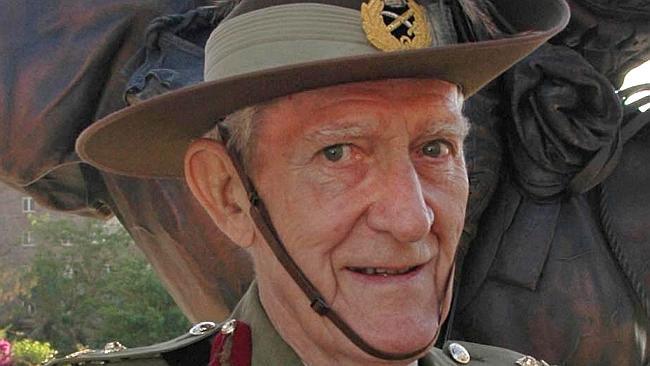Landmine injury inspired Major William ‘Digger’ James to become champion of war veterans
When Major William ‘Digger’ James was injured during the Korean War he never let it dampen his spirits or his urge to help others

Today in History
Don't miss out on the headlines from Today in History. Followed categories will be added to My News.
In November 1952, during one of several major struggles for Hill 355 in the Korean War, platoon commander William “Digger” James led a patrol of 12 men out to capture an enemy outpost.
The patrol accidentally stumbled into a Canadian minefield and James and one of his men stepped on a mine. One man was killed, James lost his foot, and three others were injured.
Assessing his own situation, James took a shoelace from his intact boot and tied it around his leg to stop the bleeding. He then organised the evacuation of his men, radioing for help and waited patiently for more than three hours while his three injured comrades were stretchered to safety before him, because of a shortage of stretchers.
While it was the end of his tour of duty in Korea it was not be the end of James’ military career, which would continue to be focused on helping fellow soldiers and veterans.
James died on the weekend and among those who have paid tribute to him is Australian War Memorial director Dr Brendan Nelson who said “Major-General ‘Digger’ James was highly regarded and respected throughout the nation as an outstanding leader, advocate for veterans, and one of the most decent and honourable Australians of the 20th century”.
He was born William Brian James in May 1930, in Shepparton, Victoria. The youngest of five children of an Irish immigrant fruit grower father, James was just 10 months old when someone placed a slouch hat on his head. The nickname Digger would stick for all his life.
Even though he had a brother who died in World War II, when the war ended James was determined to join the army. He entered the Royal Military College at Duntroon in 1948 and after graduating in 1951 was sent to the Korean War as a junior officer with the 1st Battalion, The Royal Australian Regiment.
For his actions after the accident with the landmine at Hill 355 he was awarded the Military Cross. The citation read: “The example set by Lieutenant James and his leadership, devotion to duty, self-sacrifice and extreme fortitude when in great personal distress was an inspiration to members of his battalion.”
James had surgery in an American MASH hospital before being flown to Japan, where he spent four weeks being treated at the British Commonwealth General Hospital in Kure. He flew home to Australia just in time for Christmas and spent 14 months in RGH Heidelberg in Melbourne undergoing rehabilitation.
Once out of hospital he transferred to the Royal Australian Armoured Corps and served as adjutant at the Armoured School and the 12th/16th Hunter River Lancers at Muswellbrook.
But his experiences in the MASH had sparked an interest in medicine, particularly relating to warfare. He left the army in 1957 to take on medical studies at Sydney University. He graduated in December 1963 and after doing his residency rejoined the army as a medical officer in the Royal Australian Army Medical Corps.
During the Vietnam War he commanded 8th Field Ambulance and was senior medical officer of the 1st Australian Task Force at Nui Dat from 1968 to 1969. His own experiences in Korea gave him unique insight into soldiers wounded by landmines.
For the inspiration and encouragement he provided these men, he was appointed a Member of the Order of the British Empire in 1969.
In 1971 he served with a British St John’s Ambulance medical relief team during the Biafran Civil War in Nigeria, his efforts there recognised with the award of an Order of St John. He was then appointed Director Army Medical Services in Queensland between 1971-75 moving on to Director of Army Medical Services, Army Headquarters from 1975 to 1981.
Promoted to Major General, he became Director General of Army Health Services from 1981 until he retired in 1985. But even in retirement he had an active life. Apart from his time as national president of the Returned Services League from 1993-97, James sat on the Council of the Australian War Memorial from 1993, was appointed chairman in 1999 and stayed in that role until 2000.
He never lost his interest in speaking out for veterans causes and acted as patron for many other medical, military and political causes, including as chairman of the Australian Light Horse Association and speaking out against Australia becoming a republic.
James married Barbara in 1954 and is survived by her, their four children and nine grandchildren.
Originally published as Landmine injury inspired Major William ‘Digger’ James to become champion of war veterans



